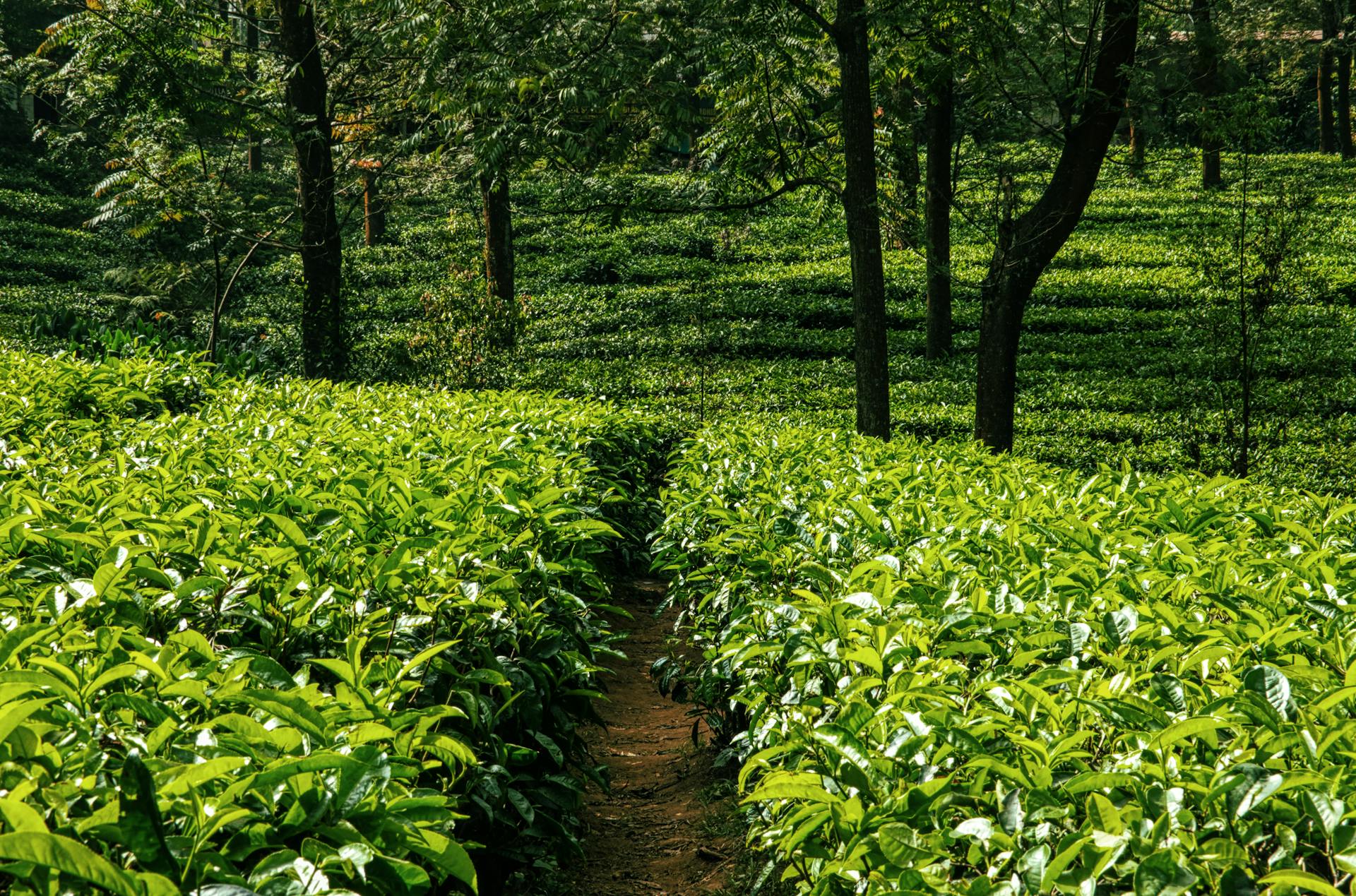Exploring Kenya’s Natural Treasures
Kenya is a country blessed with an abundance of natural treasures, from its vast savannahs and majestic mountains to its turquoise waters and vibrant coral reefs. It is home to numerous national parks and marine parks that showcase the country’s rich biodiversity and provide a haven for wildlife and marine species. Whether you’re a nature enthusiast, an adventure seeker, or simply curious about Kenya’s natural wonders, this comprehensive guide will take you on a journey through the country’s most stunning national parks and marine parks. So, grab your safari hat and diving gear, and get ready to explore the breathtaking beauty of Kenya’s natural treasures. Let us start our journey Exploring Kenya’s Natural Treasures.
The significance of Kenya’s natural treasures
Kenya’s natural treasures hold immense significance not only for the country itself but also for the global community. These pristine ecosystems provide critical habitats for a wide range of wildlife and marine species, many of which are endangered or threatened. The national parks and marine parks play a crucial role in conservation efforts, as they offer protected areas where these species can thrive and reproduce.
In addition to their ecological importance, Kenya’s natural treasures also contribute to the country’s economy through tourism. Nature enthusiasts and adventure seekers from around the world are drawn to the awe-inspiring landscapes and diverse wildlife that these parks offer. As a result, tourism revenue helps support local communities living near these areas, providing them with livelihood opportunities and incentives to conserve the natural environment.
By exploring and appreciating Kenya’s national parks and marine parks, we not only gain a deeper understanding of the interconnectedness of all living beings but also play a part in their preservation. So, let’s delve deeper into the breathtaking beauty and significance of each park, and discover the wonders that await us in Kenya’s natural treasures.
MY MUST HAVE GUIDES FOR TRAVELING
Everything you neeed to know about traveling.

Dooney & Bourke Pebble Grain Tote

Sony ZV-1 Camera for Content Creators, Vlogging and YouTube with Flip Screen

Sony FE 70-200mm F2.8 GM OSS II Full-Frame Constant-Aperture telephoto Zoom G

Skullcandy CRUSHER EVO Wireless Over-Ear Headset (Certified Refurb)-TRUE BLACK
Don’t miss the chance to visit Chamarel, a small village known for its unique geological formations. The Seven Colored Earths are a natural phenomenon where the sand dunes display a mesmerizing palette of colors, an incredible sight that will leave you in awe.
A breakdown of Kenyan National Parks
Kenya is home to a remarkable collection of national parks, each brimming with unique landscapes and diverse wildlife. These protected areas serve as vital corridors for migration, breeding, and survival for various species. Let’s take a closer look at some of Kenya’s renowned national parks and the treasures they hold.
Masai Mara National Reserve: Famous for the Great Migration, where millions of wildebeest traverse its grassy plains in search of fresh grazing. Here, visitors can witness the dramatic river crossings and observe an array of predators, including lions, cheetahs, and leopards.
Amboseli National Park: Nestled at the foot of Mount Kilimanjaro, this park offers breathtaking views of Africa’s highest peak. Elephants are a highlight here, along with a plethora of other wildlife, such as zebras, giraffes, and diverse bird species.
Tsavo East and West National Parks: Known for their vast landscapes and diverse ecosystems, these parks are a haven for large herds of elephants, buffalos, and other game. The parks also boast lava flows, volcanic cones, and the incredible Mzima Springs, providing refreshing oases for wildlife and visitors alike.
Samburu National Reserve: This park showcases the unique wildlife found in Kenya’s arid northern region. Visitors can spot the “Samburu Special Five,” including the reticulated giraffe, Grevy’s zebra, Somali ostrich, Beisa oryx, and the gerenuk.
Lake Nakuru National Park: Situated around the picturesque Lake Nakuru, the park is a bird lover’s paradise, with thousands of flamingos painting the lake pink. Rhinos, lions, and other wildlife can also be spotted amidst the acacia woodlands and cliffs.
Aberdare National Park: Nestled in the central highlands, Aberdare is a hidden gem for nature lovers. Its dense forests are home to various species, including the elusive bongo antelope, which can be spotted during guided walking safaris. Visitors can also enjoy birdwatching and camping amidst breathtaking waterfalls and scenic viewpoints.
These national parks are just a glimpse of Kenya’s natural treasures, and each offers a memorable experience. So, gear up and get ready to embark on a remarkable journey through Kenya’s national parks, where the wonders of nature await at every turn. Stay tuned as we delve deeper into each park, unveiling their hidden gems and remarkable stories.
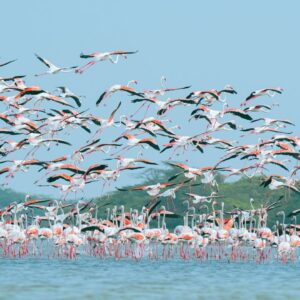
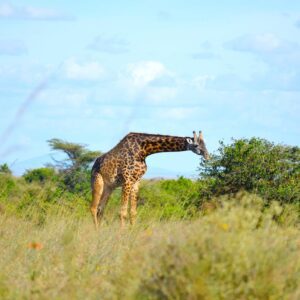
An overview of Kenyan Marine Parks
Kenya’s natural treasures extend beyond its national parks, encompassing a stunning array of marine parks along its coastline. These marine parks boast crystal-clear waters, vibrant coral reefs, and a rich diversity of marine life. Let’s take a look at some of Kenya’s renowned marine parks and what makes them so special.
Malindi Marine Park: Located near the town of Malindi, this marine park is famous for its colorful coral reefs and abundant fish species. Snorkeling and diving enthusiasts will be amazed by the underwater beauty here, with sightings of turtles, dolphins, and even whale sharks.
Kisite Mpunguti Marine National Park: Nestled in the turquoise waters off Kenya’s southern coast, this marine park is a haven for snorkelers and divers. Visitors can explore pristine coral reefs teeming with tropical fish, as well as encounter dolphins, manta rays, and humpback whales during the migration season.
Watamu Marine National Park: Recognized as a UNESCO Biosphere Reserve, this marine park offers a unique combination of coral gardens, mangroves, and seagrass beds. Snorkelers will be mesmerized by the vibrant coral formations and the chance to spot hawksbill turtles and colorful reef fish.
Diani-Chale Marine National Reserve: Stretching along Kenya’s south coast, this marine reserve is renowned for its white sandy beaches and thriving coral gardens. Snorkelers can explore the marine life close to the shore, while divers have the opportunity to dive deeper and encounter species like reef sharks and barracudas.
Mombasa Marine National Park: This marine park, located near Kenya’s coastal city of Mombasa, offers a unique combination of vibrant coral reefs and mangrove forests. Snorkelers and divers can explore the park’s diverse ecosystems, which provide a sanctuary for numerous marine creatures, including sea turtles, dolphins, and a variety of fish species.
These marine parks provide a valuable habitat for marine life and offer visitors an unparalleled experience in underwater exploration. Stay tuned as we dive deeper into each marine park, revealing their hidden wonders and the conservation efforts that protect them. Gear up for a journey through Kenya’s marine parks, where the wonders of the ocean await at every dive.

Exploring the Pristine Beauty of Kenya Coast Beaches
The pristine beauty of Kenya’s coastline is nothing short of breathtaking. With its sparkling turquoise waters, beautiful sandy beaches, and a rich blend of cultural heritage, the Kenya coast beaches are a hidden gem that offers an unmatched tropical experience. From Diani Beach’s alluring charm to the untouched retreat of Lamu Island, each corner of the Kenyan coastline has its unique appeal that attracts beach lovers from around the globe.
The Kenya coast beaches are a blend of crystal clear turquoise waters, powdery white sands, and lush palm fringes that create an idyllic tropical paradise. The coastline stretches over 500 kilometers, offering an array of stunning beaches each with its unique appeal. The magnificent sunrise and sunset views, the calm soothing sea breeze, and the rhythmic sound of the waves crashing against the shore all contribute to the serene and picturesque beauty of the Kenya coast beaches.
One beach that should be on every traveler’s list is Flic-en-Flac. This pristine stretch of sand is located on the western coast of the island and offers a tranquil escape with its calm waters and peaceful atmosphere. Whether you’re looking to relax under the shade of a beach umbrella or participate in some exciting water sports activities like snorkeling or kayaking, Flic-en-Flac has something for everyone.
Watamu Beach is a marine lover’s paradise. Nestled within the Watamu Marine National Park, the beach is home to a rich diversity of marine life and stunning coral reefs, making it a popular spot for snorkeling and diving. The clear blue waters and vibrant underwater world provide an unforgettable aquatic adventure for visitors. Watamu Beach is not just about water activities; its pristine beauty and tranquility make it an ideal place for relaxation and rejuvenation.
Nyali Beach is another gem on the Kenya coast. Located in Mombasa, Kenya’s second-largest city, Nyali Beach offers a perfect blend of urban life and beach tranquility. The beach is known for its clean sandy shores, calm waters, and spectacular views, making it a favorite spot for both locals and tourists. The beachfront is lined with luxury hotels, restaurants, and entertainment spots, offering a lively and vibrant atmosphere.
Lamu Island is a true embodiment of untouched beauty. The island is home to some of the most secluded beaches on the Kenya coast, offering a tranquil and serene environment. The beaches are characterized by their pristine beauty, bright blue waters, and the absence of large crowds, offering a perfect getaway for those seeking solitude and peace. The traditional Swahili architecture and the slow pace of life add to the charm of Lamu Island.
The Kenya coast beaches are not just about relaxation and tranquility; they also offer a host of thrilling water activities. Whether you’re an adrenaline junkie or a water sports enthusiast, there’s something for everyone. From snorkeling and diving in the rich marine parks, surfing the waves, kite surfing, sailing, or deep-sea fishing, the Kenya coast beaches offer an exciting aquatic adventure.
The Kenya coast beaches are a melting pot of cultures. The coast has been a hub of trade and cultural exchange for centuries, and this rich history is evident in the coastal towns and beaches. From the traditional Swahili architecture to the vibrant festivals, music, and cuisine, the cultural heritage of the Kenya coast adds a unique charm to the beach experience.
Sustainable tourism and conservation are at the heart of Kenya’s coastal regions. The government and local communities are actively involved in efforts to preserve the natural beauty and biodiversity of the coast. Marine parks and reserves have been established to protect the marine life and coral reefs. At the same time, eco-friendly practices are encouraged among tourists and locals to ensure the sustainability of the coastal ecosystem.
In conclusion, the Kenya coast beaches offer a unique blend of pristine beauty, rich cultural heritage, and thrilling water activities. Whether you’re seeking a tranquil retreat, an adrenaline-fueled adventure, or a cultural immersion, the Kenya coast beaches have something to offer. Above all, the commitment to sustainable tourism and conservation ensures that these beautiful beaches can be enjoyed by future generations. So, pack your beachwear and get ready for an unforgettable coastal adventure in Kenya.

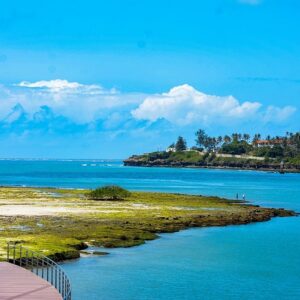
Conservation efforts and initiatives in Kenya
Conservation efforts and initiatives in Kenya are a crucial aspect of preserving and protecting the country’s natural treasures, including the national parks and marine parks. The Kenyan government and various organizations are working tirelessly to ensure the sustainability of these environments for future generations.
One notable initiative is the establishment of protected areas and the implementation of strict regulations to prevent overfishing, habitat destruction, and pollution in the marine parks. Monitoring programs are in place to track the health of the coral reefs and the species that inhabit them, allowing for timely interventions when necessary.
Additionally, community-based conservation projects have been successful in engaging local communities in conservation activities and providing alternative livelihoods that reduce their reliance on unsustainable practices.
Planning your trip to Kenya’s natural treasures
Beyond its stunning attractions and awe-inspiring landscapes, one of the true gems of Mauritius lies in its people and their welcoming nature. The warmth and hospitality of the locals is a defining characteristic of this island paradise, making it a must-visit destination for anyone seeking an authentic cultural experience.
The first step in planning your trip is to decide which park or parks you want to visit. Kenya is home to a wide range of national parks, each with its own unique features and attractions. From the famous Maasai Mara National Reserve, known for its annual wildebeest migration, to the rugged landscapes of Tsavo National Park, with its diverse wildlife and stunning views, there is no shortage of options to choose from.
If you are interested in marine life and underwater adventures, the marine parks along Kenya’s coastline are a must-visit. These protected areas offer a chance to dive or snorkel among vibrant coral reefs, swim alongside sea turtles and dolphins, and explore the diverse marine ecosystem.
Next, consider the best time to visit your chosen park. Kenya has a dry season and a rainy season, and the timing of your visit can greatly impact your experience. The dry season, which falls between June and October, offers excellent wildlife viewing opportunities as animals congregate around water sources. On the other hand, the rainy season, from November to May, brings lush green landscapes and the possibility of witnessing the Great Migration in certain parks.
Once you have decided on the park and the timing of your visit, it’s important to make the necessary arrangements for transportation, accommodation, and activities. Kenya has a well-developed tourism infrastructure, with options ranging from luxury lodges and tented camps to budget-friendly accommodations. It’s advisable to book in advance, especially during peak season, to secure your preferred choice.
Lastly, don’t forget to familiarize yourself with the rules and regulations of the parks you will be visiting. Each park has its own guidelines to ensure the protection and preservation of the environment. By respecting these rules, you contribute to the ongoing conservation efforts and help keep these natural treasures intact for future generations.


TYPICAL COSTS WHEN TOURING KENYA
In this section, we’re going to delve into the typical costs you can expect when visiting Kenya. It’s always important to have a budget in mind to ensure you can make the most of your trip without breaking the bank.
Touring the exotic landscapes of Kenya, a country rich in culture and wildlife, is a dream for many travelers. However, as with any travel plan, it’s essential to understand the typical costs involved. This article will explore the average costs of accommodation, food, transportation, and activities like safaris when touring Kenya.
Accommodation – Accommodation in Kenya can range across a broad spectrum depending on your preferences and budget. For backpackers and budget travelers, hostels and budget hotels can cost anywhere between $10 to $30 per night. Mid-range hotels offer more comfort and amenities, and their prices typically range from $50 to $100 per night. If you’re after luxury, high-end resorts and lodges, especially in wildlife reserves, can cost anywhere from $200 to over $500 per night. However, these high-end accommodations often include meals and safari activities, offering an all-inclusive experience.
Food – Kenyan cuisine is a blend of traditional African, Arab, and European influences, providing a unique gastronomic experience. Street food such as “samosas” and “chapatis” can cost as little as $1, while a meal at a local restaurant can cost between $3 to $10. If you prefer dining at upscale restaurants, expect to spend anywhere from $20 to $50 per meal. Drinks, both alcoholic and non-alcoholic, can cost between $1 to $5, with imported brands being more expensive.
Transportation – Transportation costs in Kenya can vary widely depending on the mode of transport. Matatus (public minibuses) and boda-bodas (motorbike taxis) are the most affordable options, with fares typically costing less than $1 for short distances. Taxi services and Uber are more expensive but offer more comfort and safety, with fares usually ranging between $3 to $10, depending on the distance. If you’re planning to rent a car, expect to pay $30 to $50 per day, excluding fuel.
Kenya is best known for its safaris, and the cost can vary based on the type and duration of the safari. A budget safari can cost anywhere from $100 to $200 per day, while a luxury safari can cost $500 or more per day. Keep in mind that these costs usually include accommodation, meals, and game drives. Other activities such as hot air balloon rides, cultural tours, and hiking trips can range from $50 to $500, depending on the activity’s nature and duration.
Touring Kenya offers an unforgettable experience of vibrant cultures, diverse wildlife, and breathtaking landscapes. While the costs can vary greatly based on your preferences and the level of comfort you seek, understanding the typical costs can help you better plan your budget and make the most of your Kenyan adventure. It’s important to remember that while some expenses might seem high, the experiences and memories you’ll gain from this beautiful country are priceless.
MONEY SAVING TIPS
Suggested daily budget – It’s always a good idea to set a daily budget when travelling to keep track of your spending. In Kenya, a daily budget of $50-$100 should cover your basic needs including accommodation, meals, transportation, and a few extra activities. However, this budget can vary depending on your travel style and the activities you want to do. Remember that safaris, which are one of Kenya’s main attractions, can be quite expensive.
However, if you stay in fancier accommodation or eat out more often, expect this to be higher!
Kenya is a country known for its breathtaking landscapes, diverse wildlife, and vibrant culture. However, touring this beautiful African nation can be expensive if you don’t plan your trip wisely. To help you make the most out of your Kenyan adventure without breaking the bank, here are some money-saving tips you should consider.
While exploring Kenya, there are several ways to stretch your budget without compromising the quality of your experience. By implementing these money-saving tips, you can make the most of your trip and still enjoy all that this beautiful destination has to offer.
Travelling to Kenya doesn’t have to be expensive. By setting a daily budget, using public transportation, eating out using coupons, renting a car or scooter, cycling, and getting city passes, you can save a lot of money and still have a fantastic time. Remember, the key to saving money while travelling is planning ahead and making smart choices. So, start planning your Kenyan adventure today and get ready to create unforgettable memories without draining your wallet.


Safety tips and guidelines for visitors
As you plan your trip to Kenya’s national parks and marine parks, it is crucial to prioritize your safety and the well-being of the environment. In this section, we will provide you with essential safety tips and guidelines to ensure a smooth and secure experience.
Wildlife interactions: While visiting national parks, it is vital to respect the wildlife and maintain a safe distance. Keep in mind that these are wild animals, and their behavior can be unpredictable. Observe animals from a safe distance and never attempt to feed or touch them. Always follow the instructions given by park rangers and guides.
Environmental conservation: Kenya’s natural treasures are fragile ecosystems that require our protection. Avoid littering and strive to leave no trace. Dispose of trash responsibly and follow the park’s regulations regarding waste management. Additionally, be cautious while driving within the parks to prevent damaging the vegetation and disturbing the wildlife.
Health precautions: Prior to your trip, consult with your healthcare provider about necessary vaccinations and medications. It is recommended to have an up-to-date tetanus shot and take malaria prophylaxis if visiting regions where malaria is prevalent. Remember to bring insect repellent, sunscreen, and a first aid kit for emergencies.
Stay Hydrated: The tropical climate of Kenya can be quite hot and humid, so it’s crucial to stay hydrated. Drink plenty of water throughout the day and avoid spending long periods in direct sunlight.
Travel insurance: Protect yourself against any unexpected events by purchasing comprehensive travel insurance. Ensure that your insurance covers medical emergencies, trip cancellations, and any activities you plan to participate in, such as diving or hiking.
Support Local Businesses: One of the best ways to be a responsible tourist is to support local businesses and communities. Opt for locally-owned accommodations, restaurants, and shops to contribute to the local economy and have an authentic experience.
Local customs and traditions: Respect the local communities and their cultural practices. Familiarize yourself with their customs and follow their guidelines. Modesty in clothing is particularly important when visiting communities adjacent to national parks.
By adhering to these safety tips and guidelines, you can make the most of your trip while ensuring a positive impact on the environment and local communities. In the following section, we will provide you with insider tips on capturing the best photographs and creating unforgettable memories during your visit to Kenya’s natural treasures.
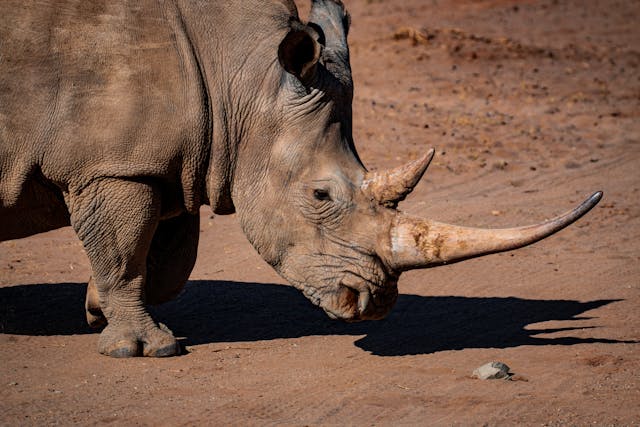
Conclusion:
Appreciating the beauty and preservation of Kenya’s natural wonders
Kenya, a jewel in East Africa’s crown, is a country that is replete with some of the most breathtaking natural wonders in the world. It’s a land that has been generously endowed with a myriad of stunning landscapes, diverse wildlife, and rich cultural heritage. This article has taken you on a journey into the beauty of Kenya’s natural splendors, and then delve into the urgent need for their preservation.
Marveling at Kenya’s Natural Splendors: A Journey into Beauty
Kenya is a veritable paradise for nature lovers, offering an array of natural attractions that are nothing short of awe-inspiring. From the majestic Mount Kenya, the second highest peak in Africa, to the Great Rift Valley with its numerous lakes, Kenya is a masterpiece of nature’s artistry. The country is also home to some of the planet’s most diverse wildlife, which can be witnessed in their natural habitats in the many national parks and reserves such as the Maasai Mara and Amboseli. The stunningly beautiful Indian Ocean coastline, fringed with palm trees and dotted with ancient Swahili settlements, further adds to the country’s natural allure. The coral reefs, mangroves, and marine parks in this region house an astonishing variety of marine life. Kenya’s natural splendors are not just visually captivating but they also offer a profound sense of connection with the natural world, a sense of being part of a larger, intricate web of life.
Safeguarding Kenya’s Natural Heritage: The Call for Preservation
Despite their immense beauty and value, Kenya’s natural wonders are facing significant threats. Deforestation, poaching, climate change, and rapid urbanization are some of the key challenges that are putting these precious ecosystems at risk. It is therefore urgent that measures be taken to safeguard this natural heritage for future generations. Conservation efforts in Kenya are being championed by both governmental and non-governmental organizations, focusing on initiatives such as reforestation, wildlife protection, and promoting sustainable tourism. The local communities are also playing a crucial role in these efforts, as they are often the best custodians of the land and its resources. It is a collective call to action, one that requires the participation and commitment of every individual, to ensure the preservation of Kenya’s natural splendors.
In conclusion, Kenya is a land of incredible natural beauty, a land that offers a rich tapestry of diverse ecosystems and wildlife. However, these natural wonders are under threat and require urgent conservation efforts. As we marvel at the beauty of Kenya’s natural heritage, let us also remember our responsibility towards its preservation. It is our collective duty to ensure that these wonders are not just appreciated in the present, but are also preserved for the enjoyment of future generations. Let’s strive to leave a legacy of a preserved and thriving natural world, a testament to our respect and appreciation for the splendors that Kenya so generously offers.










